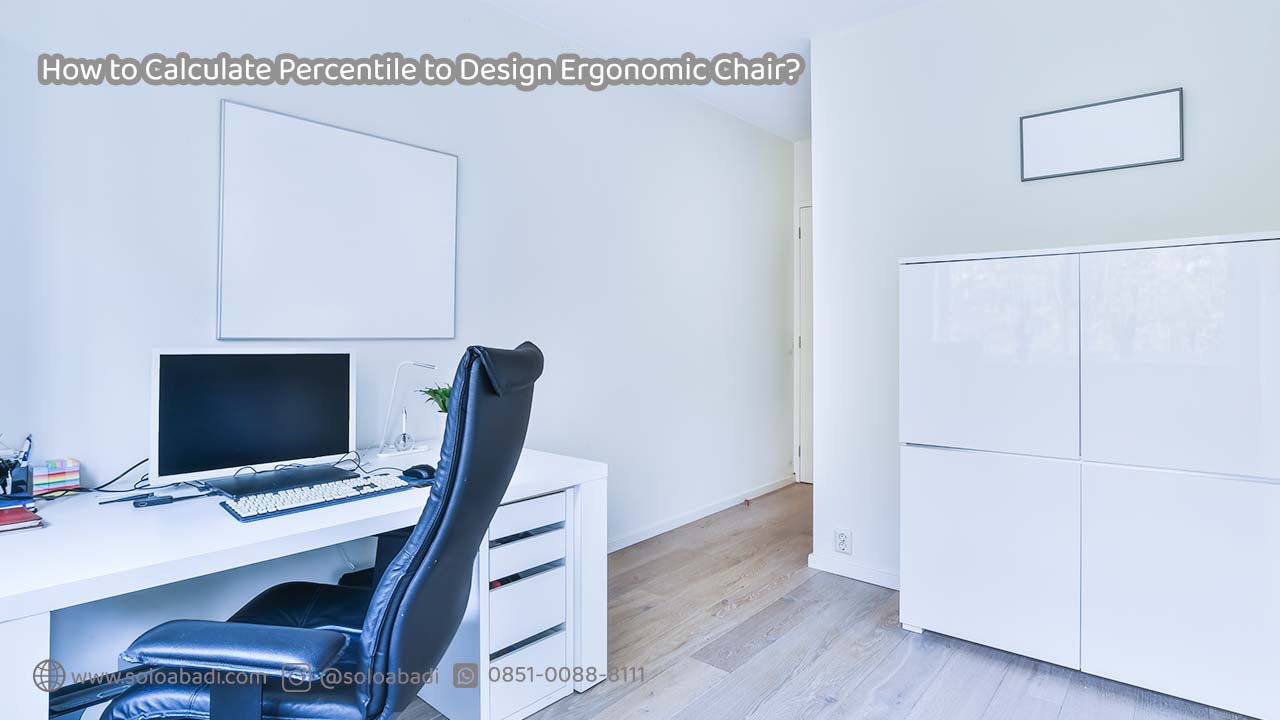How to calculate percentile is a basic question before you get to know further about designing ergonomic product. Additionally, designers use percentiles throughout product designs to achieve ergonomics or conformity with human body dimensions. Therefore, let’s explore how to calculate percentiles in ergonomic chair design!

What is The Percentile in Ergonomics?
The data obtained from anthropometric measurements varies, even within the same population, because each individual has different anatomical body structures. Therefore, we have to calculate anthropometric measurement data into a normal distribution.
Why Do We Have to Use Normal Distribution?
Normal distribution is a statistical distribution that depicts how specific human body dimension measurements spread within a population. Normal distribution is necessary to ensure that product design is not based solely on the concept of averages. We can not use the concept of averages and mean only since it only accommodates approximately 50% of the population’s sizes. Meanwhile, the remaining 50% cannot utilize such designs.
The Principle of Percentile in Anthropometric Measurement
Percentiles represent a certain percentage of a group of people, whose dimensions are equal to or higher and lower than that value. Hence, In order to design an ergonomic chair, there are two principles of percentiles.
First, anthropometric percentiles in individuals are based solely on each measurement. For instance, in measuring the popliteal height, we are using the comparison of popliteal measurements.
Second, no individual is referred to as the 90th or 5th percentile. This means that someone who is at the 50th percentile for seat height might be at the 40th percentile for popliteal height or the 50th percentile for elbow height.
Calculating the Mean and Standard Deviation
First, In testing anthropometric data, you can utilize software like SPSS 11 or the Kolmogorov-Smirnov Z test. However, you need to first calculate the uniformity of anthropometric data by computing the Mean and Standard Deviation, as illustrated in the example below:

Calculating Upper and Lower Control Limits
The upper control limit is the value that bounds the distribution of numbers within the normal range, whereas the lower control limit represents the distribution of numbers below the normal range. To calculate UCL (BKA) and LCL (BKB), you need to compute the mean and standard deviation.

How to Calculate Percentile to Design Ergonomic Chair?
Before performing calculations, you need to gather anthropometric data. The tools you’ll need are an Anthropometer or an Anthropometric Chair. Both of these tools are the most common anthropometric measurement.
Additionally, you need to determine the population size and the dimensions for chair design.
The required chair design dimensions are:
- The Width of Chair: Taken from the height of the student’s hips.
- Chair Length: Taken from the length of the popliteal.
- Chair Backrest Height: Taken from the height of the seated shoulder.
- The Backrest Width: Taken from the shoulder width.
The percentile sizes typically used for chair design are the 5th percentile for small sizes, the 50th percentile for average sizes, and the 95th percentile for large sizes. Hence, The formulas for each are as follows

What Instrument Are Used to Design Ergonomic Chair?
1. Anthropometric Chair


The Anthropometric Chair from PT Solo Abadi Indonesia is the world’s first anthropometric chair. With high-quality specifications, the Anthropometric Chair has undergone a calibration process that verifies the anthropometric data it produces. Not only that, but the Anthropometric Chair is capable of measuring up to 34 dimensions of the human body.
2. Portable Anthropometry
Portable Anthropometry is an anthropometric measuring device capable of measuring up to 100 dimensions of the human body. Unlike the Anthropometric Chair, Portable Anthropometry can be used anywhere due to its portable design.
For further information, please kindly contact us through admin@soloabadi.com or WhatsApp at 08510888111.


